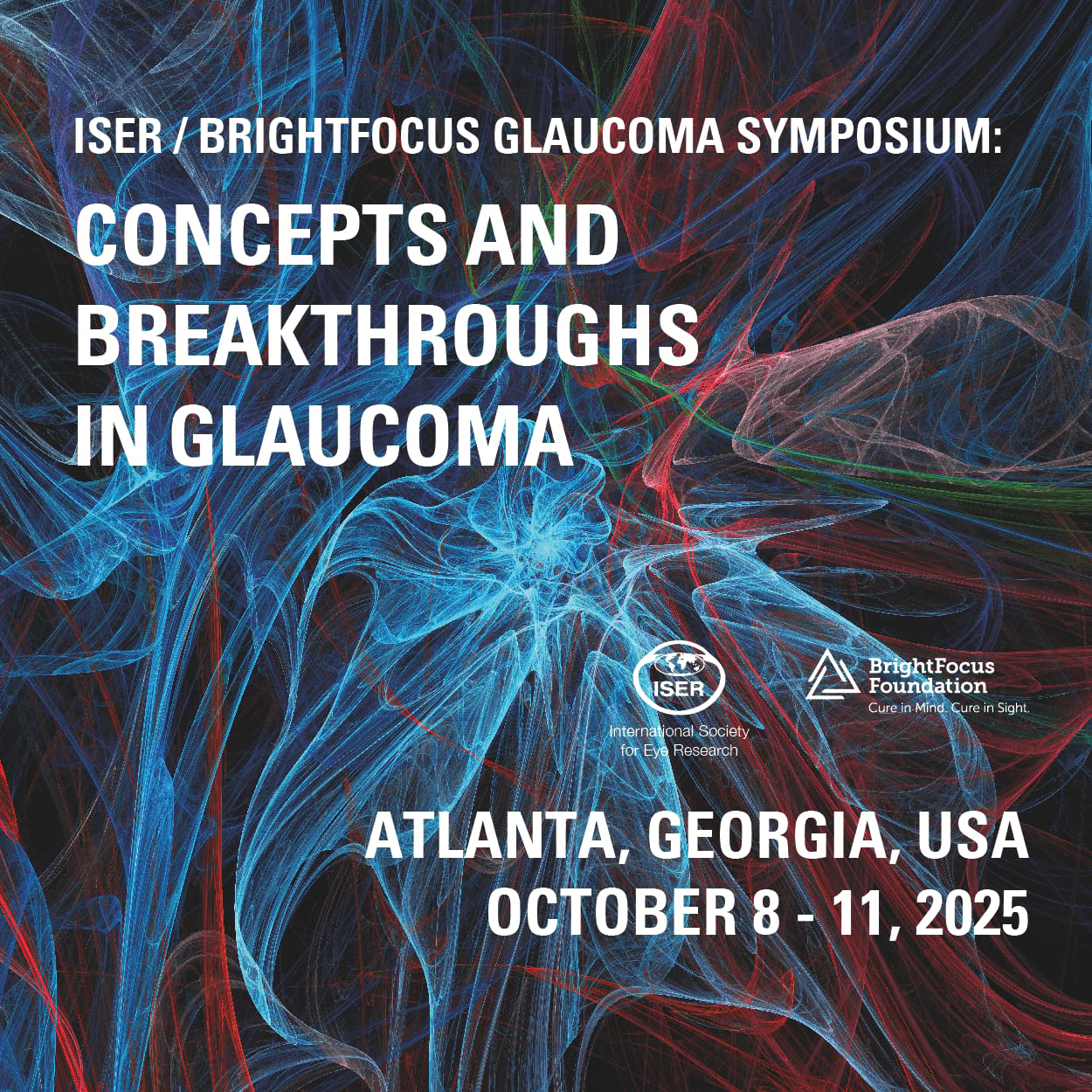BRIGHTFOCUS GLAUCOMA FAST TRACK

BrightFocus Foundation will hold its fourth Glaucoma Fast Track workshop to help speed progress towards finding a cure for glaucoma by investing in promising young scientists in the field of vision research.
Graduate students, postdoctoral fellows, or other early-stage scientists focused on glaucoma research, or those who want to enter the field, can take advantage of this unique opportunity to accelerate their path towards becoming an expert in this exciting field by:
- immersing themselves in the background knowledge and latest discoveries in glaucoma research
- connecting with preeminent glaucoma experts and fellow early-stage researchers based in the U.S. and around the world
- engaging in scientific debates.
Co-Organizers & Co-Chairs:
Diane Bovenkamp, PhD
Abbot F. Clark, PhD
Colleen McDowell, PhD
Rebecca M. Sappington, PhD
BRIGHTFOCUS GLAUCOMA FAST TRACK, 8 OCTOBER 2025
08:00-09:00
OPENING TALK
What is glaucoma and clinical aspects of glaucoma
Yvonne Ou, MD
09:00-10:15
OPENING TALK
What is glaucoma and clinical aspects of glaucoma
Yvonne Ou, MD
10:15–10:45
Coffee break
10:45–12:00
OPENING TALK
What is glaucoma and clinical aspects of glaucoma
Yvonne Ou, MD
12:00–13:15
Lunch break
13:15–14:30
OPENING TALK
What is glaucoma and clinical aspects of glaucoma
Yvonne Ou, MD
14:30–15:30
OPENING TALK
What is glaucoma and clinical aspects of glaucoma
Yvonne Ou, MD
15:30–16:00
Coffee break
16:00–17:00
OPENING TALK
What is glaucoma and clinical aspects of glaucoma
Yvonne Ou, MD
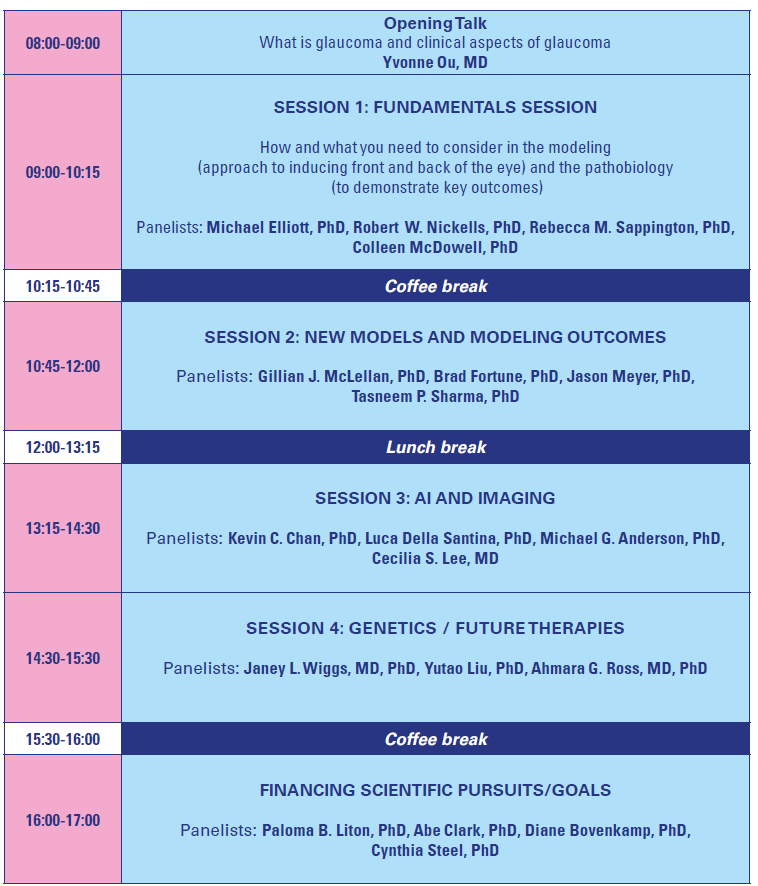
SPECIAL SESSION on COMMUNICATION & COLLABORATION
There will be a special session on Communication & Collaboration exclusively for all travel fellows attending the 2025 meeting, presented by communication expert Bri McWhorter on October 7, 2025.

Bri McWhorter
Bri McWhorter is the founder of Activate to Captivate, where she teaches communication techniques from an actor’s point of view. She specializes in public speaking, presentation skills, scientific communications, interview skills, and interpersonal communications. Bri has worked with a variety of organizations including top universities around the country, Fortune 500 companies, government organizations such as the NIH and Special Forces, and numerous scientific foundations. Bri enjoys helping people distill complex information into engaging stories to share with others.
Speakers

Mike Anderson, PhD
Professor Department of Molecular Physiology and Biophysics, Carver College of Medicine Iowa Glaucoma Center, Institute for Vision Research University of Iowa
Dr. Anderson is a geneticist who emphasizes use of mouse models in his work on glaucoma at the University of Iowa. His approaches are often centered on phenotype-driven genetics, which offers an opportunity to discover pathways important in the physiologically-relevant context of a whole animal. Using this approach over the past 25 years, he has studied genes influencing ocular disease as simple Mendelian factors (Sh3pxd2b, Myoc, Tbk1, Apbb2), digenic interactions (Gpnmb & Tyrp1), modifiers (Ab3b1, Tyr), and quantitative traits (Cctq, Mrdq, Acdq). He also uses mouse genetics to perform functional tests of mechanism, including studies of loci implicated in glaucoma via GWAS. All these projects are heavily dependent on an ability to work with mice and phenotype them rigorously. In recent years, the need for quantitative phenotyping of retinal ganglion cells and their axons has led Dr. Anderson to collaboratively contribute to development of several resources for automated phenotyping, including iterations of AxonDeep and AxoNet. In ongoing work, Dr. Anderson continues to help build the capabilities of these tools, which have the promise to move advances from the rapidly evolving AI and imaging fields into breakthroughs for glaucoma.

DIANE BOVENKAMP, PhD
Vice President of Scientific Affairs and chief scientist at BrightFocus Foundation
Diane Bovenkamp, PhD, Vice President of Scientific Affairs, is the chief scientist at BrightFocus Foundation, overseeing global operations of the organization’s research programs. She serves as the scientific liaison in local, national, and international forums, and identifies and develops new research initiatives, partnerships, and funding policies consistent with the mission of BrightFocus.
Dr. Bovenkamp obtained her PhD in Biochemistry from Queen’s University in Kingston, Ontario, Canada, discovering and studying Eph receptors in angiogenesis and neural development in zebrafish and mice. She completed a Postdoctoral Fellowship in the Vascular Biology Program at Boston Children’s Hospital/Harvard Medical School, isolating and characterizing zebrafish neuropilins. Dr. Bovenkamp conducted further research at the Johns Hopkins University Bayview Proteomics Center in the Division of Cardiology at Johns Hopkins School of Medicine in Baltimore, Maryland, using proteomic techniques for biomarker detection in human serum.
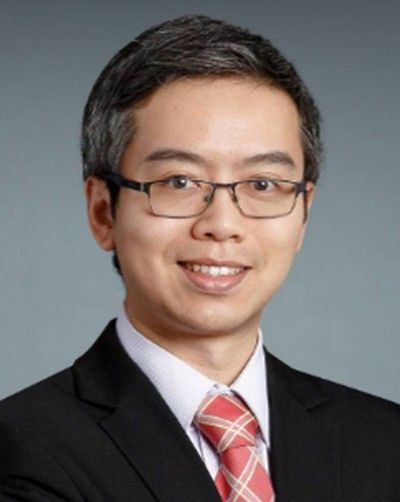
Kevin Chan, PhD
Assistant Professor New York University Grossman School of Medicine
His laboratory focuses on developing and applying new, non-invasive methods for imaging neurodegeneration, neurodevelopment, neuroplasticity, and neuroregeneration in both humans and experimental animal models of glaucoma and other vision-related diseases and injuries to guide vision preservation and restoration. Dr. Chan completed his doctoral studies in biomedical engineering at The University of Hong Kong, and was awarded the Li Ka Shing Prize for the best Ph.D. thesis at the University studying imaging of the visual system. He has nearly two decades of experience in structural, metabolic, and functional magnetic resonance imaging (MRI) research on the eye and brain. At NYU, his team also combines the use of optical coherence tomography, MRI, neuromodulation, and psychophysical assessments to determine the processes underlying the interplay among eye, brain, and behavior in health and disease. Dr. Chan is a 2024 Gold Fellow of the Association for Research in Vision and Ophthalmology (ARVO). In addition, he received the 2019 BrightFocus Foundation Thomas R. Lee Award for Glaucoma Research.
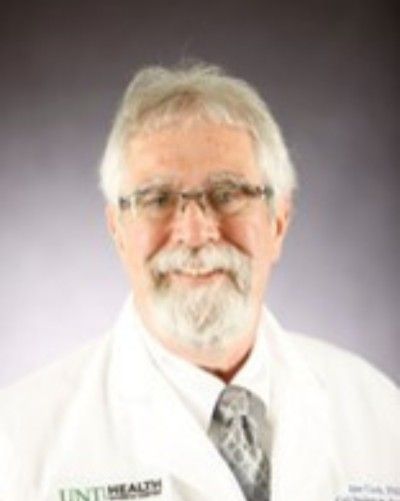
Abe Clark, PhD
Graduate School of Biomedical Sciences, Executive Director and FARVOProfessor, North Texas Eye Research Institute, Executive Director and Regents Professor, Pharmacology & Neuroscience, University of North Texas Health Science Center
Prior to joining UNTHSC 16 years ago, Abe worked at Alcon Laboratories for 23 years, departing as Vice President of Discovery Research and Head of Glaucoma Research to join UNTHSC. His research has been focused on the discovery of molecular pathogenic pathways for glaucomatous damage to the eye in order to develop novel disease modifying therapies for glaucoma. Abe’s laboratory has recently discovered both small molecule, gene therapies, and genome editing that prevent glaucoma damage to the eye and vision centers of the brain. Dr. Clark collaborates with a number of other investigators around the world in order to perform interdisciplinary and translational research. Abe’s lab has been continuous funded by grants from the NEI, Department of Defense, and pharmaceutical/biotechnology companies. Dr. Clark has published more that 250 peer-reviewed scientific articles, 22 book chapters and is the editor of 2 ophthalmic textbooks. He is an inventor of more than 80 patents. Abe has given over 140 invited national and international presentations of his research and has organized and/or chaired sessions in 26 national and international scientific meetings. He serves on the editorial boards of 3 ophthalmic journals and Molecular Neurodegeneration. He also has successfully trained 23 PhD students as well as 7 postdoctoral fellows.
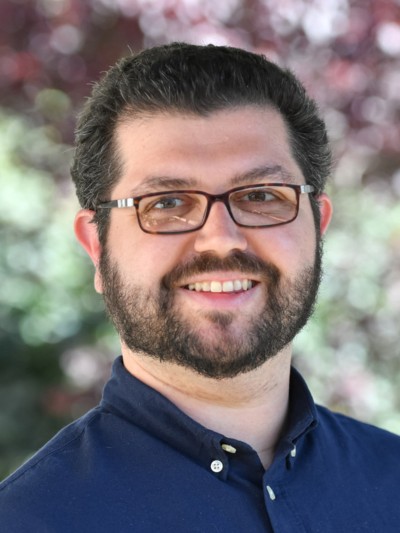
LUCA DELLA SANTINA, PhD
Assistant Professor, University of Houston, College of Optometry
His research aims at understanding how retinal circuits are dismantled during glaucoma and other retinal neurodegenerative diseases responsible for blindness worldwide. As neurons are lost in the retina, the remaining circuits are progressively dismantled and rearranged, creating a challenging environment for vision restoration therapies. His laboratory also develops novel tools based on AI for large-scale detection of retinal synapses across animal species and disease models, that are shared with the neuroscience. community to improve our ability to recognize early patterns of synaptic pathology.
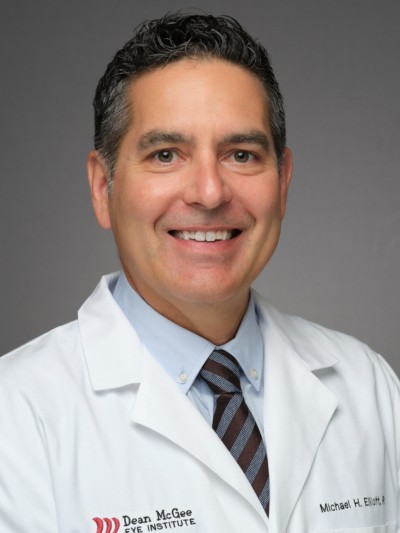
Michael Elliott, PhD
Endowed Chair in Ophthalmology Presbyterian Health Foundation Presidential Professor Professor of Ophthalmology, College of Medicine Professor of Biochemistry & Physiology, College of Medicine University of Oklahoma Health Sciences Center Dean A. McGee Eye Institute
Dr. Elliott’s research interests focus on the roles of membrane microdomains, so-called “lipid rafts” in ocular physiology and pathophysiology. These interests include studies on caveolae, specialized lipid domains, which act as mechanosensors in the aqueous humor drainage pathway. He also works in the retina examining how membrane microdomains modulate neuroinflammatory and neuroprotective signaling and ocular vascular function. His research is supported by the National Eye Institute and by past funding from foundations including the BrightFocus Foundation, Research to Prevent Blindness, Inc., American Diabetes Association, PHF, and the Oklahoma Center for Adult Stem Cell Research. Dr. Elliott is a Gold Fellow of the Association for Research in Vision and Ophthalmology and member of the Alcon Research Institute and the Trabecular Meshwork Study Club.

Brad Fortune, OD, PhD
Senior Scientist Van Buskirk Chair for Ophthalmic Research Discoveries in Sight Research Laboratories Devers Eye Institute, Legacy Research Institute
Research Interests:
· Measurement of vision function in human glaucoma and experimental models of glaucoma
· Electrophysiological assessment of vision function clinically and in experimental disease models
· Imaging retinal nerve fiber layer and optic nerve head structure, ocular blood flow, correlations with vision function
· Glaucoma pathogenesis, axonal transport, neurovascular coupling
· Vision restoration

Cecilia Lee, MD
Professor of Ophthalmology Klorfine Family Endowed Chair University of Washington
Dr. Lee’s research focuses on the role of ophthalmology in understanding systemic and neurological health, with an emphasis on leveraging the eye as a non-invasive window into overall well-being. Her work explores how advanced retinal imaging technologies can uncover structural and vascular changes in the retina that reflect broader systemic processes, including neurodegeneration, vascular disease, and metabolic disorders. By applying artificial intelligence and machine learning to analyze large-scale imaging datasets, Dr. Lee identifies biomarkers for early detection, disease progression, and risk stratification across conditions like Alzheimer’s disease, dementia, and diabetes. Her research highlights the strong associations between ophthalmic conditions—including diabetic retinopathy, glaucoma, and age-related macular degeneration—and systemic diseases, emphasizing the potential of eye health to provide critical insights into brain and body health. Through innovative tools, collaborative frameworks, and data-sharing platforms, Dr. Lee aims to bridge the gap between ophthalmology and systemic medicine, advancing strategies for prevention, earlier diagnosis, and improved management of diseases that impact both vision and overall health.

PALOMA LITON, PhD
Full Professor, Duke University
Dr. Paloma Liton is a tenured professor at Duke University with joint appointments in the Departments of Ophthalmology and Pathology. She earned her Ph.D. in Molecular Biology from the Universidad Autónoma de Madrid in 2001 and completed postdoctoral training in outflow pathway biology and physiology in the laboratory of the late Dr. David Epstein. Dr. Liton’s research explores the link between autophagy-lysosomal pathway dysfunction and glaucoma in aging eyes. She has pioneered studies on autophagy in outflow pathway physiology and neurodegeneration in glaucoma. Her contributions have earned her several prestigious awards, including the Alcon Research Institute Young Investigator Award and the Thomas R. Lee Glaucoma Research Award. An active member of the scientific community, Dr. Liton serves on editorial boards of multiple journals, including Experimental Eye Research as Executive Editor. She also participates in review panels for the National Eye Institute, BrightFocus Foundation, and other international study sections. Additionally, she is part of the BrightFocus Scientific Committee Board, chairs the ISER/BrightFocus Travel Award Committee and acts as the Vice-president of the Americas for ISER.

Yutao Liu, PhD
Professor, Graduate Program Director Cellular Biology & Anatomy Co-Director, James & Jean Culver Vision Discovery Institute Medical College of Georgia at Augusta University
He has been the CBA Graduate Program Director, the Basic Science Co-Director of the James and Jean Culver Vision Discovery Institute, and the Director of the NEI P30 Center Core Grant at Augusta University. He is a human molecular geneticist studying human genetic disorders (glaucoma and keratoconus), supported by NIH/NEI and private foundations, with over 180 publications. Since 2010, he has been an active Co-Investigator of the NEIGHBOR and NEIGHBORHOOD consortia to study glaucoma genetics using GWAS, next-gen sequencing, and bioinformatics approaches. His research focuses on the functional characterization of GWAS-identified glaucoma/keratoconus genes using human disease tissues, in vitro 2D and 3D cell culture (primary human corneal, trabecular meshwork, and endothelial cells), organ-on-a-chip with human cells, and in vivo transgenic mouse models to determine the gene-environmental or cell-cell interactions. He is also interested in exploring the role of extracellular vesicles (EVs) in the pathogenesis of glaucoma and keratoconus using nanoparticle tracking analysis, electron microscopy, ddPCR, and multi-omics approaches. His group is currently investigating the role of estrogen receptor signaling in modulating outflow/IOP and glaucoma risk.

Colleen McDowell, PhD
Associate Professor Department of Ophthalmology and Visual Sciences University of Wisconsin-Madison
Her laboratory is dedicated to dissecting the molecular mechanisms responsible for glaucomatous trabecular meshwork (TM) damage, elevated intraocular pressure (IOP), as well as damage to the retina and optic nerve (ON). Their approach utilizes in vitro, in vivo, and ex vivo model systems combined with advanced molecular genetics, physiology, and imaging techniques. The involvement of TGFβ2 signaling pathways in the regulation of the extracellular matrix (ECM) in the trabecular meshwork (TM) has been well established. Her laboratory identified for the first time crosstalk between the TGFβ2 signaling pathway and the toll like receptor 4 (TLR4) signaling pathway in the regulation of the ECM in the TM. We are now identifying new targets in the TGFβ2-TLR4 signaling crosstalk to lower IOP and further explain the mechanisms involved in the development of glaucomatous TM damage. In addition, we are exploring the mechanisms for the development and regulation of segmental outflow through the TM and Schlemm’s canal. Interestingly, there are many functional, structural, and cellular similarities between TM cells and optic nerve head (ONH) astrocytes and lamina cribrosa (LC) cells. The ONH region progressively remodels during glaucoma, leading to cupping of the optic disk as well as mechanical failure and fibrosis of the LC; however, the cellular and molecular mechanisms responsible for this remodeling are poorly understood. Her laboratory is also interested in identifying these mechanisms involved in the production and regulation of the ECM in the glaucomatous ONH.

Gillian McLellan, PhD
Professor and Chair, Department of Surgical Sciences Tim and Nancy Speaker Chair in Canine Health School of Veterinary Medicine Professor of Comparative Ophthalmology, Department of Ophthalmology and Visual Sciences, School of Medicine and Public Health University of Wisconsin-Madison
Dr McLellan is a tenured professor and Chair of Surgical Sciences at the University of Wisconsin-Madison. She is a board-certified clinician-scientist-veterinarian with PhD and post-doctoral training in the fields of ophthalmology, cell biology and comparative ocular pathology, and experience in the conduct of GLP pre-clinical safety and efficacy studies. For over 15 years, her research has focused on the molecular and cellular mechanisms that underlie IOP dysregulation and neurodegeneration in glaucoma, including tissue, cellular and molecular genetic factors that determine susceptibility to loss of vision. She has established many productive inter-disciplinary collaborations, that incorporate electrophysiology, pharmacology, genomics, transcriptomics, advanced imaging, pathology and biomechanical engineering. Her studies of glaucoma span molecular pathology to whole animal pathology and the in vivo characterization of animal and human disease. Work in the McLellan lab also probes complex links between glaucoma and Alzheimer’s-like pathology and cognitive dysfunction in mouse models and in companion animals. She has a strong interest in advanced imaging technologies, as Program Director responsible for the Multimodal Imaging for Animal Models of Eye Disease director of UW-Madison’s Animal Models Vision Research Core, and as a member of the Wisconsin Advanced Imaging of the Visual System (WAIVS) laboratory steering committee.

JASON MEYER, PhD
A. Donald Merritt Professor of Medical and Molecular Genetics Director, SNRI Stem Cell Research Group Director, NCRAD iPS Cell Laboratory
Jason Meyer is the A. Donald Merritt Professor of Medical and Molecular Genetics at Indiana University School of Medicine, where he directs both the SNRI Stem Cel Research Group and the NCRAD iPSC Laboratory. His work employs human pluripotent stem cell models to investigate retinal development and disease, with a special focus on retinal ganglion cells (RGCs) and the optic nerve. The Meyer Lab is particularly interested in understanding the interactions between RGCs and glial cells, including astrocytes and microglia, which are pivotal in the neurodegenerative processes observed in glaucoma. By leveraging advanced techniques such as CRISPR/Cas9 gene editing, microfluidic platforms, and organoid models, his research dissects disease pathways to uncover critical factors that affect RGC survival, axonal integrity, and glial crosstalk in disease progression. Through collaborative work with leading colleagues, his lab’s research aims to deepen our understanding of glaucoma and related diseases by focusing studies on disease modeling, drug discovery, and cell replacement approaches. This interdisciplinary approach not only deepens our understanding of retinal biology but also contributes to the development of more effective therapeutic strategies.

Rob Nickells, PhD
Professor and F. A. Davis Chair Department of Ophthalmology and Visual Science University of Wisconsin – Madison
Dr. Nickells received his PhD in developmental biology at the University of Calgary and began studying the pathophysiology of glaucoma as a research fellow at the Wilmer Eye Institute at Johns Hopkins. He is currently Professor and Frederick A. Davis Research Chair in the Department of Ophthalmology and Visual Science at the University of Wisconsin-Madison, where he runs an active research program centered on the molecular pathways activated in retinal ganglion cells after optic nerve damage. A major focus is on the interactions of the pro-apoptotic and anti-apoptotic members of the Bcl2 gene family. Major branches of this research include investigating the role of BAX in the process of mitochondrial dynamics, how modulating BAX alters the activation program, and the development of therapies that target BAX function. In addition to this focus on biology intrinsic to ganglion cells, the lab is now investigating some of the multiple roles that retinal glia play in ganglion cell homeostasis and pathology.

Yvonne Ou, MD
Dr. and Mrs. Stacy R. Mettier Jr. Professor of Ophthalmology Vice Chair for Postgraduate Education Department of Ophthalmology University of California, San Francisco

Ahmara Ross, MD, PhD
Assistant Professor of Ophthalmology and Neurology, University of Pennsylvania, Scheie Eye Institute
Dr. Ross is a physician-scientist at the University of Pennsylvania dedicated to understanding the genetic mechanisms of glaucoma and developing innovative treatments for optic neuropathies. Clinically, she treats patients suffering from irreversible vision loss due to retinal ganglion cell (RGC) death. While reducing intraocular pressure remains the primary treatment for glaucoma, many patients continue to experience disease progression, and as a neuro-ophthalmologist, she also manage blindness from untreatable conditions. Her lab integrates molecular biology, gene delivery, stem cell differentiation, and mouse models of ocular neurodegeneration to develop gene-based strategies for RGC protection and restoration. One focus is the use of SIRT1 as a therapeutic candidate while optimizing tools such as AAV-mediated cloning and iPSC-derived RGCs. Another focus is the evaluate potentially disease-causing single nucleotide polymorphisms identified as glaucoma “risk” genes, understand their pathophysiological contribution to RGC degeneration, and investigate the potential for neuroprotective and neurorestorative therapy. Ultimately, she aims to accelerate the translation of innovative therapies from bench to bedside, improving treatment options for patients.

REBECCA SAPPINGTON, PhD
Associate Professor Co-Director, Translational Eye and Vision Research Center Director, Ocular Biorepository Core Resource Chair, Faculty Development Council Dept. Biochemistry
Dr. Sappington’s research program focuses on inflammation and stress signaling in neurodegeneration, particularly in the visual system. Her work focuses on signaling pathways and disease features with commonality across neurodegenerative diseases. As such, her laboratory utilizes traditional models of eye disease as well as small and large animal models of amyotrophic lateral sclerosis and Alzheimer’s disease. She also has a passion for technical innovation in basic and translational sciences. Through collaborative team science, Dr. Sappington is contributing to the development of novel particle-based drug delivery tools, tissue preservation and transplantation mediums, and modified CRISPR-based gene editing tools.

Tasneem Sharma, PhD
Vice Chair of Strategic Engagement Assistant Professor Department of Ophthalmology Indiana University School of Medicine
Her vision is to streamline healthcare pipelines to make them affordable and accessible to the public. Her research targets glaucoma pathology and space biology effects using preclinical human eye models. She developed a patented pressure model to study glaucoma and astronaut-related eye defects, aiming to create interventions that improve public healthcare. By investigating ocular neurodegeneration, pressure-induced neuronal cell death, and leveraging stem cell technologies, her work advances disease modeling and precision medicine. She is dedicated to uncovering the complex pathogenesis of glaucoma, moving beyond intraocular pressure modulation to develop neuroprotective strategies that safeguard retinal neurons. Additionally, she explores regenerative medicine through stem cell-based neuronal transplantation to restore visual function and improve patient outcomes. This combined focus on neuroprotection and regeneration drives my efforts to transform ocular neurodegenerative disease treatments, enhancing patient prognoses and quality of life while advancing therapeutic innovation.

Cynthia Steele, PhD
Scientific Consultant
Cynthia Steel has had an extensive and diverse career spanning over two decades in both academia and industry. She has a PhD in Cell Biology, Neurobiology, and Anatomy from Loyola University Chicago, as well as an MBA from the University of South Florida. She is the lead author of eight peer-reviewed manuscripts and a number of scientific abstracts, and was the recipient of research grants from the Department of Veterans Affairs as well as a Shaffer Grant for Innovative Research from the Glaucoma Research Foundation during her time in academia.
In 2016, Cynthia used her love of glaucoma research to make the transition to industry. Since then, she has worked at both small startups as well as large publicly-traded companies, and currently serves as a contract Science, Engineering, and Technical Advisor (SETA) at the Advanced Research Projects Agency for Healthcare (ARPA-H).
Cynthia also recently began her own venture into the world of podcasting, by founding and hosting the “Bench to Boardroom” podcast, which can be found on Apple Podcasts, YouTube, and Spotify.

Janey Wiggs, MD, PhD
Paul Austin Chandler Professor of Ophthalmology Vice Chair for Clinical Research Co-director Ocular Genomics Institute Harvard Medical School
Dr. Wiggs’s research program is focused on the discovery and characterization of genetic factors that contribute to glaucoma and has been continuously funded by the National Eye Institute (NEI) for this work for over 30 years. She is the PI of the NEIGHBORHOOD consortium for Primary open angle glaucoma genetics and a founding member of the International Glaucoma Genetics Consortium. She has lead large primary open angle glaucoma genome-wide association studies (GWAS) and has had critical roles in GWAS studies identifying novel loci for intraocular pressure and for exfoliation glaucoma. She also studies the genetic etiologies of familial types of glaucoma and has recently identified EFEMP1 and THBS1 as causal genes for childhood forms of glaucoma. Ongoing research studies include: a multi-ethnic normal tension glaucoma GWAS; a metabolomics study of blood plasma in exfoliation glaucoma patients and controls; whole genome sequencing of families affected by early-onset forms of glaucoma, investigations related to contributions of rare variants to primary open angle glaucoma and evaluation of polygenic risk burden in at-risk populations. She is currently developing genetic tests for early detection of primary open angle glaucoma based on rare variants and polygenic risk scores.

